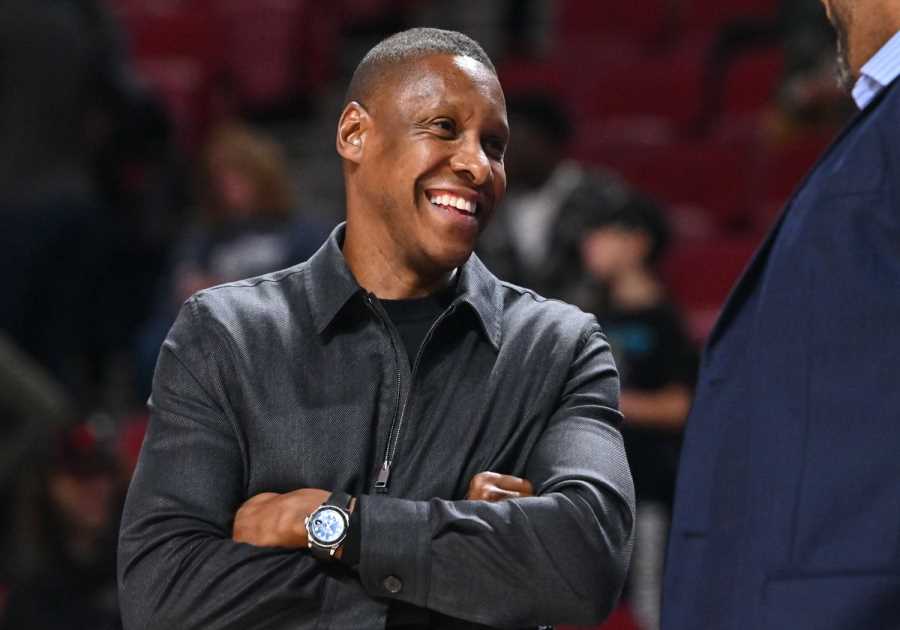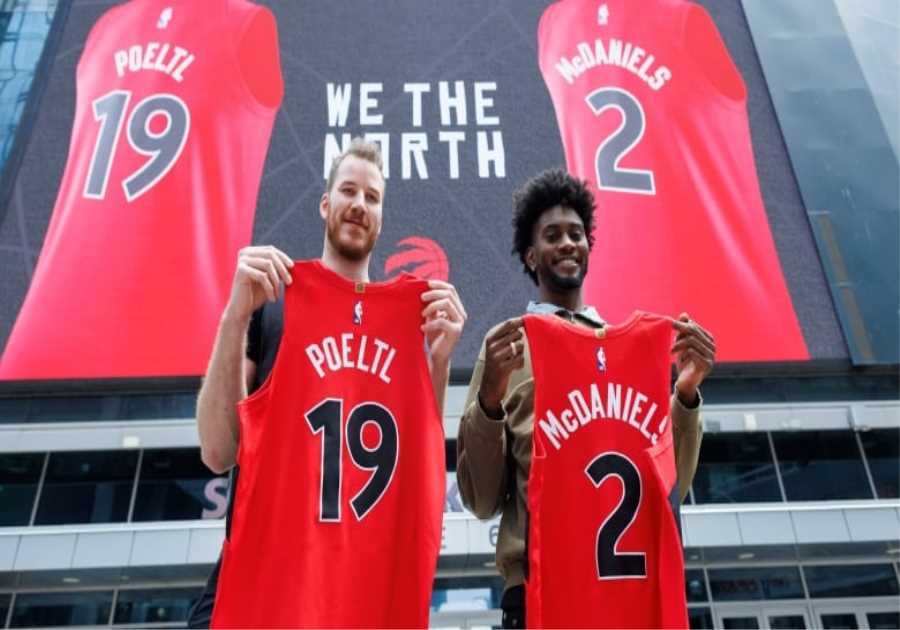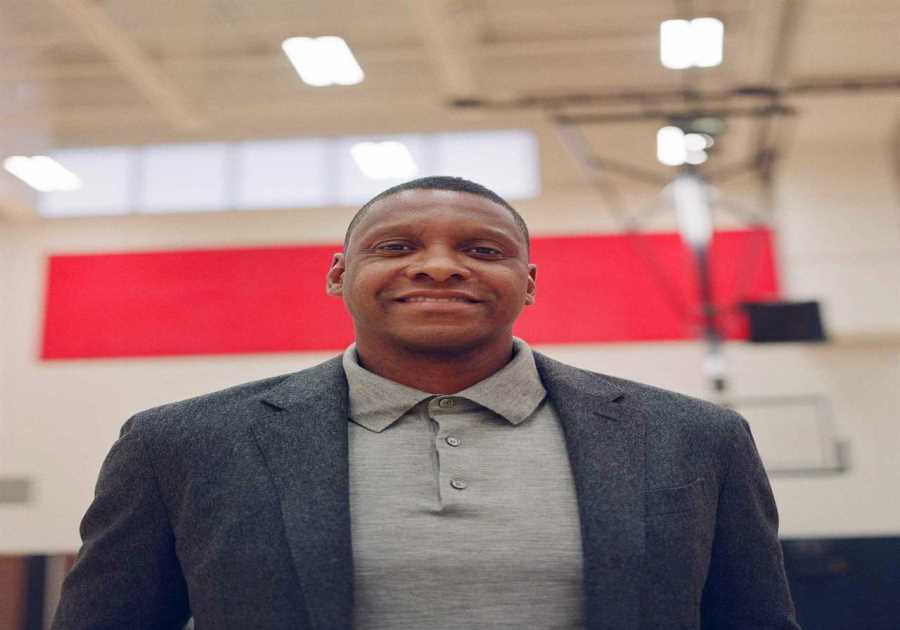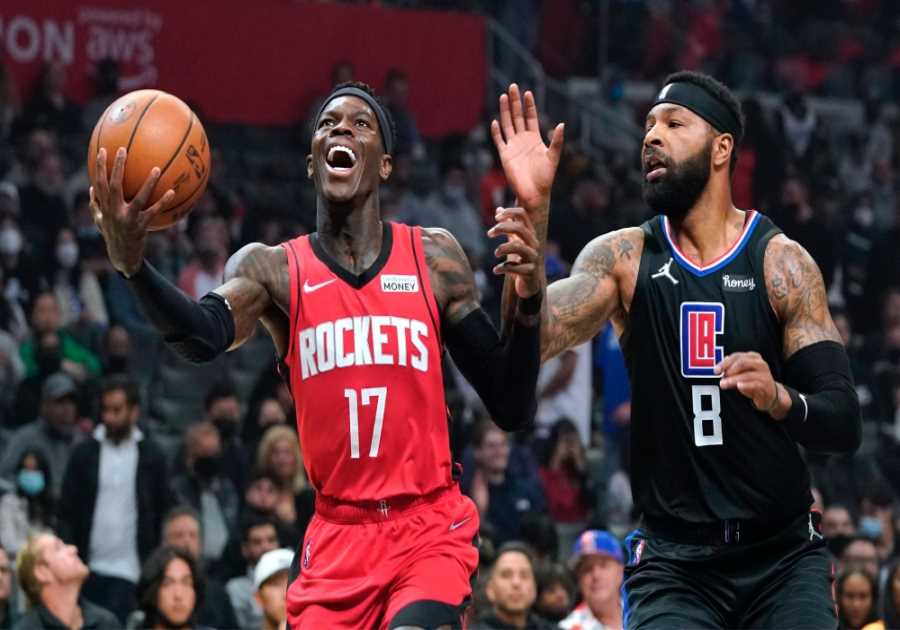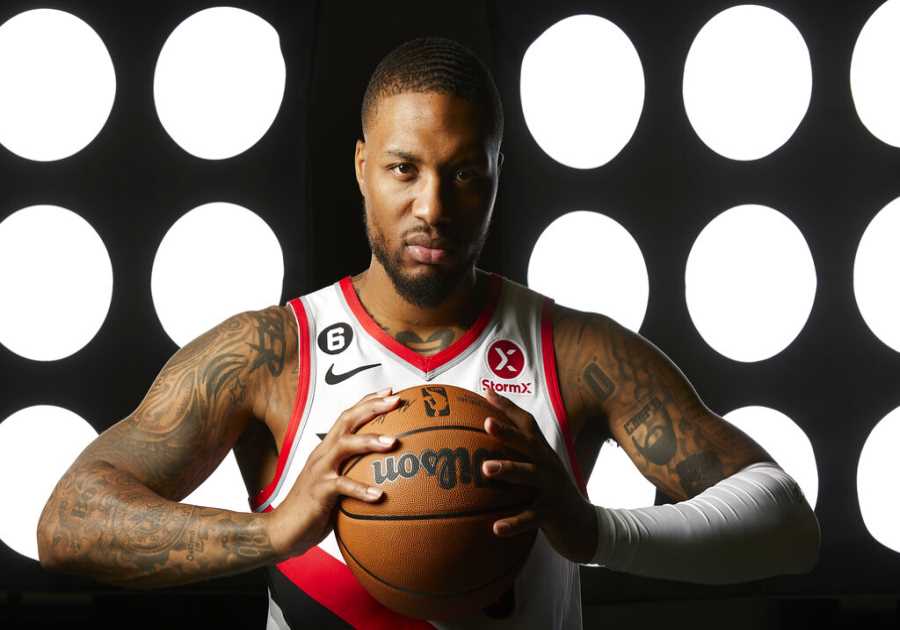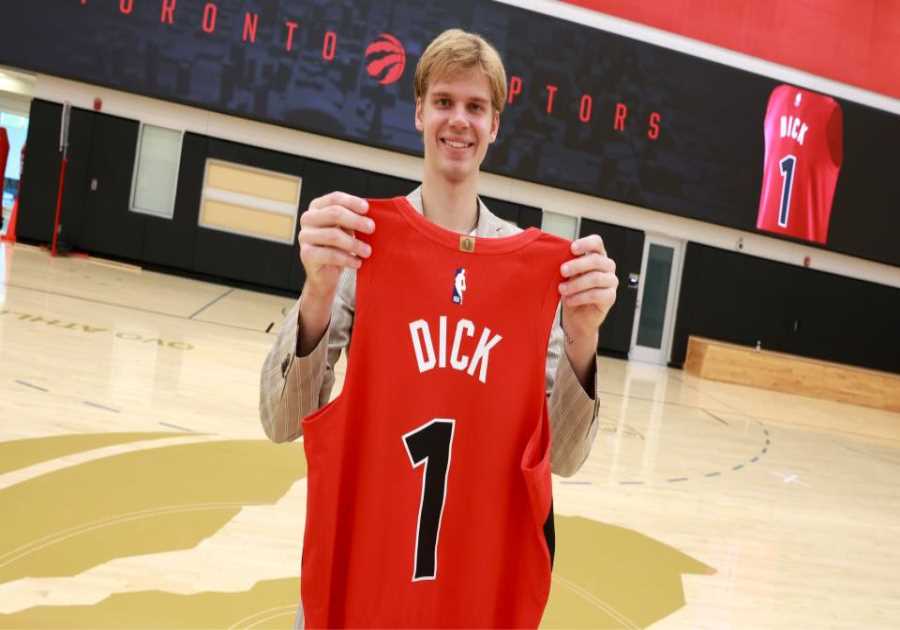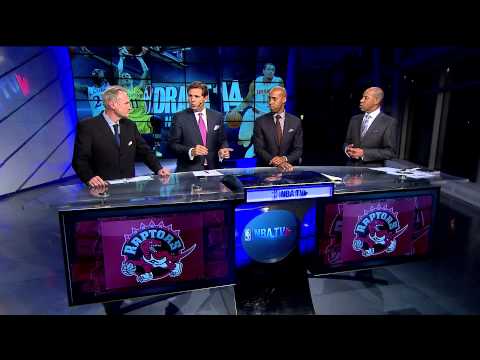
The Education of Bruno: A powerful lesson that persistence will pay off
Introduction:
For many Raptors fans, Bruno Caboclo is a glaring mistake in the otherwise glowing draft record of Masai Ujiri. Bruno’s lone highlight as a Raptor was perhaps his debut performance, where he was substituted into a game that the Raptors had well in hand; As he walked to the scoring table at the then Air Canada Center, chants of ‘Bruno! Bruno’ rang through the building. He ended the game with 8 points, one rebound, and a block. Bruno would only play 25 games for the Raptors over the next four years. He would eventually be traded to the Sacramento Kings and have stints with the Grizzlies and Rockets. He now plays for the Ratiopharm ULM in the German Basketball Bundesliga.
A cursory glance at his career would lead anyone to conclude that Caboclo, selected 20th overall in the first round, was a wasted pick. Dig a little deeper and the ramifications and aftermath of drafting the Brazilian led to a seismic shift in the Raptors’ success and organizational development. It is also an insight into the inner workings of Masai Ujiri’s mind, his strategic focus, attention to detail and passion for the job.
The Beginning:
It’s 2014. Ujiri had just completed his first year as general manager for the Toronto Raptors. He had somehow transformed the flotsam and jetsam of the Raptors’ roster, that previous GM Bryan Colangelo had accumulated over his seven-year tenure. For the first time in five years, the Raptors were a playoff team and had won their second Atlantic division championship. On the surface, the future looked bright, but underneath those still waters, the club faced challenges that put doubt on the sustainability of its success. In particular, the team faced an inability to develop and keep its own talent in free agency or lure desirable free agents across the border. To overcome this, Masai knew he had to change the team culture. To make players proud to be Raptors. He had to make Toronto a destination.
Then along came Bruno.
The Raptors’ head of global scouting, Patrick Engelbrecht, brought Caboclo to Masai’s attention. Engelbrecht had discovered him at a Basketball Without Borders Argentina camp where Bruno would win MVP honours. Caboclo was being coached by Ime Udoka, who was Spurs assistant coach at the time. Englebrecht would persuade Masai to fly to Brazil to attend Bruno’s practices. Ujiri was suitably impressed and would send a group of Raptors management in secret, to a gym in Houston to watch Bruno in-action.
David Silver’s announcment that the raptors were using their first-round pick to acquire Caboclo, was received with bewilderment.
The now infamous Fran Fraschilla quote that he was ‘two years away from being two years away’ will always be part of Raptor lore. Looking back, Fraschilla may have been overly generous in his appraisal.
To be fair, the pick was always risky. Masai intended to choose Caboclo in the second round, but a confluence of events led to the choices they had in mind for the first-round pick being taken, leaving them to choose between players that they were not interested in but were available at that draft position or Bruno. They chose Bruno.
The acquisition of Caboclo may have been less about Bruno himself and more about the one that got away. At six-foot-nine with a seven-foot-seven wingspan, Bruno’s long, rangy physique and athleticism must have stirred up thoughts of what could have been. Ujiri’s unrequited love of Giannis Antetokoumpo has been documented. While unable to acquire the “Greek Freak” through a draft day trade, Masai’s desire for a freak of his own remained intact. In so many ways, Ujiri finally got what he had always wanted.
And yet, like so many happy endings, it was just the beginning of another story.
The Plan:
Masai had a vision for the Brazilian freak, but like all projects, there were a few hurdles to overcome. Caboclo arrived in Toronto at 18, a raw talent that needed much work. He was also a young man lost in a new country, without family or friends and unable to speak the language. Raised in a poor, working-class family, the added culture shock of sudden fame and fortune would have been overwhelming. After taking stock of the situation, Masai did what any overprotective young mother would do after finding their firstborn playing alone in the schoolyard. He found Bruno, a friend.
Lucas ‘Bebe’ Nogueira, a fellow Brazilian and another basketball project with length and quickness, was acquired as a seeming throw-in for the John Salmons-Lou Williams trade. Bebe would be Bruno’s companion on his trips to the D-league and dinners in Toronto. The two young men who shared a common language and culture would become close.
Bebe would be released five months after Bruno was traded to Sacramento. While it may appear Bebe was just an afterthought in the trade, he was like everything else Masai’s Midas touch brushed: sprinkled with gold. Nogueira’s four-year journey was much more productive than Bruno’s.
But I digress.
So a friend found: step one in the doting parent playbook was now ticked off. Onto step two. What was Masai going to do about Bruno’s education? While the uber-athletic forward looked physically like an NBA player. Bruno’s skills, basketball IQ, and maturity were far from NBA-ready. During one of his first NBA summer league games, Bruno was dunked on so ferociously and embarrassingly that the youngster was seen crying on the bench. The weight of expectations wore heavy on his shoulders. The kid needed an education in how to play at an NBA level. He needed those all-important court reps in if he was ever to unfurl all of that god-given raw talent that Ujiri had glimpsed.
Unfortunately, circumstances would get in the way.
Masai’s culture shift for making Toronto a premier landing place for the NBA’s elite was in full swing: The ‘We the North’ campaign was a huge success and the fanbase had a newfound air of pride; Drake’s Ambassadorship and the rapper’s relationship with star players were opening eyes around the league; The 2014-15 Raptors won 49 games, at the time, the most in franchise history; Coach Dwayne Casey was running a tight ship playing a small nine-man rotation
The team didn’t have the luxury of development time for their first-round draft pick.
Since the local school was not accepting new students, Masai had no choice but to send him away to boarding school. To be exact, the Fort Wayne Mad Ants of the D League.
The Mad Ants at the time had affiliations with 14 different NBA teams. Bruno’s development was not a priority for them. Bruno spent two short stints at Fort Wayne, barely getting off the bench. Bruno was recalled back to Toronto and assigned to the schooling of Raptors assistant Jama Mahelalela, learning new skills, going over drills, and practising with other young Raptors. While his lack of experience was evident, what raised eyebrows with the players, coaches and management was how disruptive his length and athleticism were on a basketball court. The potential was mind-blowing if he could put that body together with an NBA mind and skill set.
But he was still not playing competitive full-court 5-on-5. So yet again, Masai’s project was running into another obstacle. And in typical Masai fashion, he didn’t go around this obstacle; he went through it.
Maple Leaf Sports and Entertainment, the ownership group of the Raptors, had been kicking around the idea of acquiring a D-league franchise since 2008. This was hardly a novel idea. The San Antonio Spurs — who were legendary for their developmental program — were one of the first NBA teams to have a D-League presence.
Why reinvent the wheel? The idea was to have a minor league team that the Raptors controlled to develop players and coaches and systems—a laboratory to experiment and find small edges over the competition. While the opportunity seemed obvious, the legal hoops and wranglings had kept the project on the side burner for six years.
But Masai was on a mission. A developmental team and a state-of-the-art practice facility were a few of the required conditions when he was hired for the general manager role. The project had to be fast-tracked with Bruno languishing in no man’s land. Masai assigned the responsibility of acquiring a D-league team to his protege Bobby Webster. Webster, years later, would be the mastermind behind the trade that would bring Kawhi to Toronto. Webster miraculously pulled off the D-League task in record time. After years of waiting, the Raptors 905 would be open for business in time for the 2015-2016 D-League season, and Bruno would finally be able to get that court time he needed.
Bruno would never become the Brazilian Kevin Durant. Under Masai’s leadership, the Raptors are now viewed as one of the best-run organizations in the NBA. Much of their success has been achieved through lessons and acquisitions they acquired in their quest to develop Caboclo. Bruno has not been with the Raptors since early 2018, but his ghost still lingers.
The Aftermath:
Masai’s fascination with long, athletic freaks has not gone unabated. Cameroonian Pascal Siakam, at 6-foot-9 with a 7-foot-3 wingspan, shares many physical similarities with Caboclo. Like Bruno, he was also discovered through Basketball Without Borders and was also a very raw talent when he was drafted late in the first round, having discovered basketball much later in life.
But there were key differences. Pascal was fluent in English and had left his family to live in the States and play prep school basketball when he was 17. He had thrived in the environment and won a scholarship at a mid-major school, New Mexico State. NMS’s head coach Menzies through his relationships in Africa, had heard of an ‘unpolished diamond’ and had decided to pursue Siakam, labelling him as a special project thanks to his physical gifts, attitude and coachability. As an Aggie, he had won the Western Athletic Conference Freshman of the Year award, and the following year he won the WACPlayer of the Year award. Masai was reworking the formula.
Initially seen as a high-energy guy off the bench, Pascal has thrived under the Raptors’ newly minted-development process. He has become a highly-skilled, two-time All-NBA player, now a two-time All-Star, and received the NBA’s most-improved player award in 2019. Earlier in the season, his name had even been mentioned in MVP talks.
The reworked Pascal/Caboclo formula was so successful Masai gave it another shot. Christian Koloko, the Raptors; second-round pick of 2022, shares some similar biographical details with Pascal. Born in Cameroon, he was another Basketball Without Borders alumnus and left his family to play college basketball in the States. Koloko seems to be travelling a similar path to the NBA that Siakam mapped before him.
While Masai may not have acquired a ‘freak’ of Giannis’ magnitude, sometimes quantity can overcome quality. The current Raptors’ on-court identity, vision 6-9, is based on long, angular players who can force turnovers with their length and close out to shooters with their quickness. At 6-foot-10 with a 7-foot-3 wingspan, Chris Boucher is another raw prospect who started basketball late but is now the first man off the Raptor’s bench. Last year’s Rookie of the Year, Scottie Barnes stands at 6-foot-8 with a 7-foot-3 wingspan. Precious Achiuwa and Dalano Banton are other examples. The Bruno formula keeps paying dividends.
Before Caboclo, the Raptors were not known for their player development. Now they are widely praised for having one of the best developmental programs in the league. This improvement can be attributed to the purchase of the Raptors 905.
The 905 have had a lot of success, separate from the Raptors. The team has a .647 winning percentage over six years, winning one final and losing another. Five players on the current roster have played for the 905, with Boucher being a D-League MVP and Siakam being a former MVP of the D-league Finals.
The importance of developing draft picks (and non-draft picks like Fred VanVleet) has allowed a team still struggling to acquire big-name free agents to become a consistent playoff team. In the 18 years before Masai, the Raptors had only made the playoffs five times, once reaching the second round. With Masai behind the helm, the team has been in the playoffs in eight of his nine years, with two conference finals and an NBA championship.
Having a constant turnstile of capable young players has also allowed the team to reload quickly after losing critical pieces like Kawhi Leonard or Kyle Lowry. It doesn’t hurt that young players also come with team-friendly contracts.
Conclusion:
Masai Ujiri has firmly ensconced a legacy with the Raptors as a creator, a visionary and a builder. He has taken a once-ailing franchise that struggled to reach the playoffs and turned it into a perennial playoff team. A team that before him had only gotten to the second round once, was now an NBA champion. In so doing, he has completely changed the team’s culture and how it is perceived worldwide. He has overhauled the Raptors’ scouting system to search beyond Europe and North America and reconstructed the development process. While some of the lustre of Masai’s achievements may have come under question recently: What is remarkable is that there was a plan behind all his machinations. It is one thing to be able to envision a blueprint. It is another to slowly and methodically carry out the tasks to accomplish the goal.
The post The Education of Bruno: A powerful lesson in persistence. first appeared on Raptors Republic.
By: [email protected]
Title: The Education of Bruno: A powerful lesson in persistence.
Sourced From: www.raptorsrepublic.com/2023/02/22/the-education-of-bruno-a-powerful-lesson-in-persistence/
Published Date: 02-22-2023
Frequently Asked Questions
How many Toronto Raptors all-stars did they have?
Vince Carter and Antonio Davis are the Raptors' eight All-Stars. These players, with the exception of VanVleet and Davis, have all been part of an impressive All-Star team.
When was the Raptors' first game?
The Raptors vs. New Jersey Nets was their first regular-season match at the SkyDome. Alvin Robertson scored the franchise's first points with 33,306 supporters in attendance. The Raptors defeated Nets in 94-79. Contributions from Damon Stoudamire (10 and 10 assists), as well as Robertson (30 pts) were key.
What was the Raptors' greatest year?
The 2019 championship season was Toronto Raptors' best season. The Raptors' first NBA Championship was memorable. Kawhi Leonard was named Finals Champion after a team record of 58-24. The Golden State Warriors were defeated in six games by the team to win the title.
In 2013, the Toronto Raptors changed their front office, replacing then-general manager Bryan Colangelo with Masai Ujiri. This change would bring a new era to the franchise and make them one of NBA's best teams.
The Raptors were able to make a comeback under Ujiri and made it to the playoffs in 2014. The Raptors have won five Division titles, and they had their most successful regular-season in 2018. Ujiri made a risky trade for Kawhi Leonard that resulted in DeMar DeRozan being traded to the San Antonio Spurs.
The Raptors had a fantastic 2019, clinching their first conference championship and making it to the NBA finals for the inaugural time. They defeated the Golden State Warriors in six games.
Ujiri's tenure with the Raptors has been a resounding success, and he should be credited with changing the team's fortunes. His leadership has made the Raptors one of the most successful teams in the NBA, and they look set to continue to be contenders for many years.
The 2019 championship season, which was undoubtedly the best in Raptors history, will be a lasting memory.
Ujiri should and will continue to be focused on building a winning culture which supports the players and staff as we move forward. This team is looking brighter with their continued dedication to excellence. The Toronto Raptors' 2019 championship season was a milestone. It is up to Ujiri, his team and their continued success to improve on this achievement.
How was the first year of existence for the Toronto Raptors?
The Toronto Raptors had a difficult first season in NBA. Brendan Malone was appointed head coach by Isiah Tom, and they soon acquired many talented players via trades and in the draft. They defeated the mighty Chicago Bulls once that season, but overall they finished with a 21-61 win-loss record.
Toronto drafted Marcus Camby in 1996. He was named Rookie of Year and was part of the starting lineup with Alvin Williams as point guard. Damon Stoudamire was traded later in 1997. Toronto made more roster changes over the years to ensure future success.
Despite all the changes, the team struggles throughout its first few seasons in the NBA. Toronto finally made it to the playoffs in 2000 after a period for rebuilding and transition. Unfortunately, the New York Knicks won the series.
Can you name the number of NBA teams in Canada?
Since 2001, the Toronto Raptors have been the only Canadian NBA team. From 1995 to 2001, the Vancouver Grizzlies was an NBA team. They moved to Memphis and became known as the Memphis Grizzlies. Canada did have two NBA teams during the late 1990s: the Vancouver Grizzlies, and the Toronto Raptors. However, no other Canadian cities have an NBA team. Despite the lack of an NBA team in Canada, Canadians are still avid basketball fans, and many make their way to the United States to catch games. The Toronto Raptors are a renowned team that has attracted large crowds to Scotiabank Arena since 1995. Every year hundreds of Canadians make the trip to the United States for the NBA All-Star Weekend. Canada can have multiple NBA teams, as it has a population greater than 38 million. Many basketball fans in North America have discussed and debated its potential for a second team. Until then, the Toronto Raptors remain the only Canadian representation in the NBA.
Canadian Elite Basketball League(CEBL) is a Canadian professional basketball team. The league includes six teams representing Canadian towns and cities: the Fraser Valley Bandits, Abbotsford (BC), Edmonton Stingers(Edmonton (Alberton), Guelph Nighthawks) Guelph Nighthawks [Guelph], Ontario], Hamilton Honey Badgers (“Hamilton”), Saskatchewan Rattlers (“Saskatoon”), and the Niagara River Lions (“St. Catharines”) The CEBL is the only professional basketball league operating in Canada currently.
The National Basketball League of Canada (NBLC) was a professional men's basketball league that operated from 2011 to 2020. It featured eight teams from Halifax, Moncton, Saint John, Cape Breton, Summerside, London, Windsor and Kitchener. The COVID-19 pandemic caused the NBLC to close its operations in 2020.
Canada also has junior basketball leagues, such as the Canadian National Basketball League (CNB), a semi-professional men's league based in Vancouver, BC. CNB includes teams from British Columbia (Alberta, Manitoba, and Ontario). The Canadian Elite Development League (CEDL) is another junior basketball league in Canada that fields teams primarily from the Greater Toronto Area. AC) or the Canadian Youth Basketball League. These leagues offer young basketball players the chance to improve their skills and compete in a friendly environment.
Why are the Toronto Raptors called Raptors?
The NBA's expansion in Canada led to the 1995 founding of Toronto Raptors. Name and logo for the team were inspired from Jurassic Park. The team colours are silver, bright red, purple, and black.
The Raptors were struggling to establish themselves in the league during their first season. They ended up with a record 21-61. They improved every year, and in 1999 they were ready to make their first playoff appearance.
The Raptors' most memorable moment occurred in 2019, when they won their inaugural NBA championship title. Toronto won their first title in thrilling six-game series against Golden State Warriors under the leadership of Kawhi and Kyle Lowry, the Raptors' backcourt duo.
The Raptors have been a beloved team in Canada since then. Toronto continues to excite basketball fans from around the world, with international superstars and local talent.
The Toronto Raptors are proud to be a part of Canada's basketball history. Their success on the court inspires young players across the country. It is clear that the Raptors will be a favorite team for many years due to their loyal fans, innovative play style, and dedication to excellence.
Statistics
- After Thomas attempted to execute a letter of intent with Slaight to purchase the team failed, he resigned from his position in November and sold his 9 percent stake in the team to Slaight. (en.wikipedia.org)
- Thomas named Raptors' GM NBA superstar to have 10% stake in the new franchise". (en.wikipedia.org)
- In November of the 1996–97 season, Bitove sold his ownership interest in the team to Slaight for $65 million after Slaight had activated a shotgun clause in their partnership agreement,[32][33] giving Slaight 79 percent control of the team, [34] (en.wikipedia.org)
- This improved during the 2006–07 regular season to an average of 18,258 fans (13th in the league), 92.2 percent capacity at the Air Canada Centre. (en.wikipedia.org)
- This improved during the 2006–07 regular season to an average of 18,258 fans (13th in the league), 92.2 percent capacity at the Air Canada Centre. (en.wikipedia.org)
External Links
assets1.sportsnet.ca/basketball/nba/teams/toronto-raptors
jerseymuseum.org
sportingnews.com/ca
bleacherreport.com
How To
Can I take my photography equipment to a Raptors Game?
You'll be fine if you stick to the plan and follow the rules. There's nothing wrong with bringing a camera to an NBA game. There is nothing illegal about this. However, you need to be aware about the potential dangers.
First, you must consider whether you must take pictures during the game. It doesn't matter if you have a DSLR or a smartphone, as long you are close to the court, you may be able capture great shots.
These tips can help you take better photos of your favorite basketball games if you're serious about sports photography.
The second thing to consider is what kind of camera you will use. Professional-grade cameras are essential for capturing action shots and memorable moments with your friends.
You also need to decide how much time you're prepared to spend setting up your shot. Consider investing in a tripod, remote release, and other equipment if you are shooting hoops with children.
Finally, you have to figure out where to store your gear. After all, you can't expect to set up shop at the arena and hope that someone will hand you a memory card when you're done. You'll need to bring extra batteries and cables or have somewhere to store your things while you watch the game.
You must plan in advance if you want to capture high-quality photographs of sporting events. This will ensure that you get great photos you can use later.

